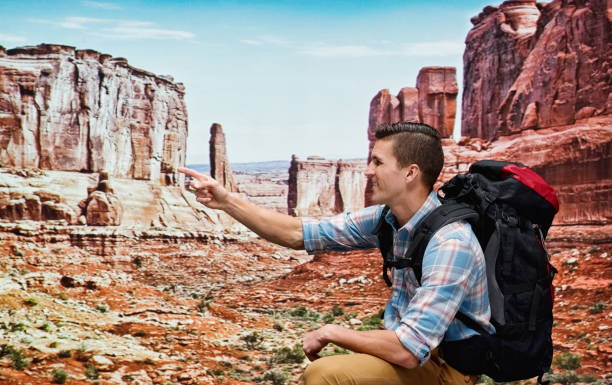Utah is a land of stunning natural beauty, famous for its iconic red rock landscapes, towering national parks, and unique cultural heritage. From the breathtaking arches of Arches National Park to the otherworldly formations of Bryce Canyon and the sprawling wilderness of Zion, Utah offers an adventure for every kind of traveler. But before you hit the red rocks and start exploring this incredible state, there are a few essential things you should know to make your trip smooth, safe, and unforgettable.
1. Know the Best Time to Visit
Utah experiences a wide range of weather depending on the region and time of year. In the summer, especially in the southern desert regions, temperatures can climb well above 100°F (38°C), making midday outdoor activities challenging. In contrast, the northern and mountainous areas can see heavy snowfall and freezing temperatures during the winter months.
Ideal Travel Seasons: The most comfortable times to visit are during spring (April to June) and fall (September to October), when the weather is mild, the crowds are more manageable, and the natural scenery comes alive with blooming wildflowers or vibrant autumn colors.
Local Tip (Mountain Time – MT): If you’re planning a winter trip for skiing in destinations like Park City, make sure to monitor the weather and road conditions closely, especially since storms can quickly impact travel in the mountains. All times and schedules in Utah operate on Mountain Time (UTC−07:00 or UTC−06:00 during daylight saving time).
2. Plan Your National Park Visits in Advance
Utah is home to five spectacular national parks — Arches, Bryce Canyon, Canyonlands, Capitol Reef, and Zion — collectively known as the “Mighty 5.” These parks are incredibly popular and can get crowded, especially in peak seasons.
Reservations & Permits: Some parks require timed entry permits or have limited parking. Zion National Park, for example, has a mandatory shuttle system during peak months. Check official park websites in advance for reservation requirements and shuttle schedules.
Early Start: Arriving early in the morning helps avoid crowds and the midday heat, giving you the best experience for hiking and photography.
3. Pack Smart for the Terrain and Weather
Utah’s terrain can be rugged and challenging. Trails range from easy walks to strenuous hikes over rocky, uneven ground. Weather can change rapidly, especially in mountainous areas.
Essentials to Pack:
- Sturdy hiking shoes or boots with good traction
- Sun protection: sunscreen, hat, sunglasses
- Layers of clothing (temperatures can vary greatly throughout the day)
- Plenty of water (desert air is dry and dehydration happens quickly)
- A basic first aid kit and trail snacks
- Maps or GPS device (cell service can be unreliable in remote areas)
Tip: Leave behind flip-flops or sandals for hiking — your feet will thank you!
4. Respect the Environment and Local Culture
Utah’s landscapes are fragile and sacred to many Native American tribes. It’s important to visit responsibly and respectfully.
- Leave No Trace: Pack out all trash, stay on designated trails, and avoid disturbing plants or wildlife.
- Cultural Respect: Many sites are culturally significant. Follow guidelines, do not remove artifacts, and respect signs and barriers.
- Local Communities: Explore small towns and support local businesses — many rely on tourism for their livelihoods.
5. Prepare for Altitude
Many of Utah’s most famous sites are at high elevations — Zion’s canyon floor sits around 4,000 feet, while Bryce Canyon’s rim reaches nearly 9,000 feet above sea level. If you’re coming from lower elevations, altitude sickness can be a concern.
Tips to Avoid Altitude Sickness:
- Stay hydrated
- Avoid strenuous activity your first day
- Take it easy and rest if you feel dizzy, nauseous, or fatigued
- Consider consulting a doctor if you have pre-existing health conditions
6. Explore Beyond the Parks
While the Mighty 5 are incredible, Utah offers much more off the beaten path:
- Salt Lake City: The state capital offers urban culture, museums, great food, and easy access to nearby ski resorts.
- Monument Valley: Iconic red rock formations that have starred in countless films, located on Navajo Nation land.
- Dead Horse Point State Park: Offers stunning overlooks of Canyonlands and the Colorado River.
- Hot Springs & Lakes: Relax in natural hot springs or visit scenic spots like Bear Lake and Great Salt Lake.
7. Drive Carefully and Prepare for Long Distances
Utah’s vast landscapes mean long drives between attractions. Roads can be winding and narrow, especially in canyon areas. Cell phone reception is often spotty or non-existent outside of towns.
Driving Tips:
- Fill up your gas tank frequently — gas stations can be sparse in rural areas.
- Have a physical map or offline GPS as backup.
- Drive cautiously on mountain roads and watch for wildlife crossing.
- Check weather conditions, especially in winter or during monsoon season (summer thunderstorms).
8. Stay Safe and Hydrated
The dry desert air combined with physical activity can quickly lead to dehydration and heat-related illnesses.
Safety Tips:
- Drink water regularly throughout the day. Carry at least 2 liters per person when hiking.
- Wear sunscreen and reapply often.
- Don’t hike alone—always have a buddy and tell someone your plans.
- Know your limits and turn back if conditions get too difficult.
Final Thoughts
Utah’s red rocks and natural wonders offer a one-of-a-kind adventure. With a little preparation and respect for the environment, you can have a safe, memorable, and awe-inspiring trip. Whether you’re hiking iconic trails, stargazing in desert skies, or soaking in local culture, Utah invites you to explore and connect with its breathtaking landscapes.
So before you pack your bags and lace up your hiking boots, keep these essential tips in mind — and get ready to experience the magic of Utah’s red rock country like never before!

